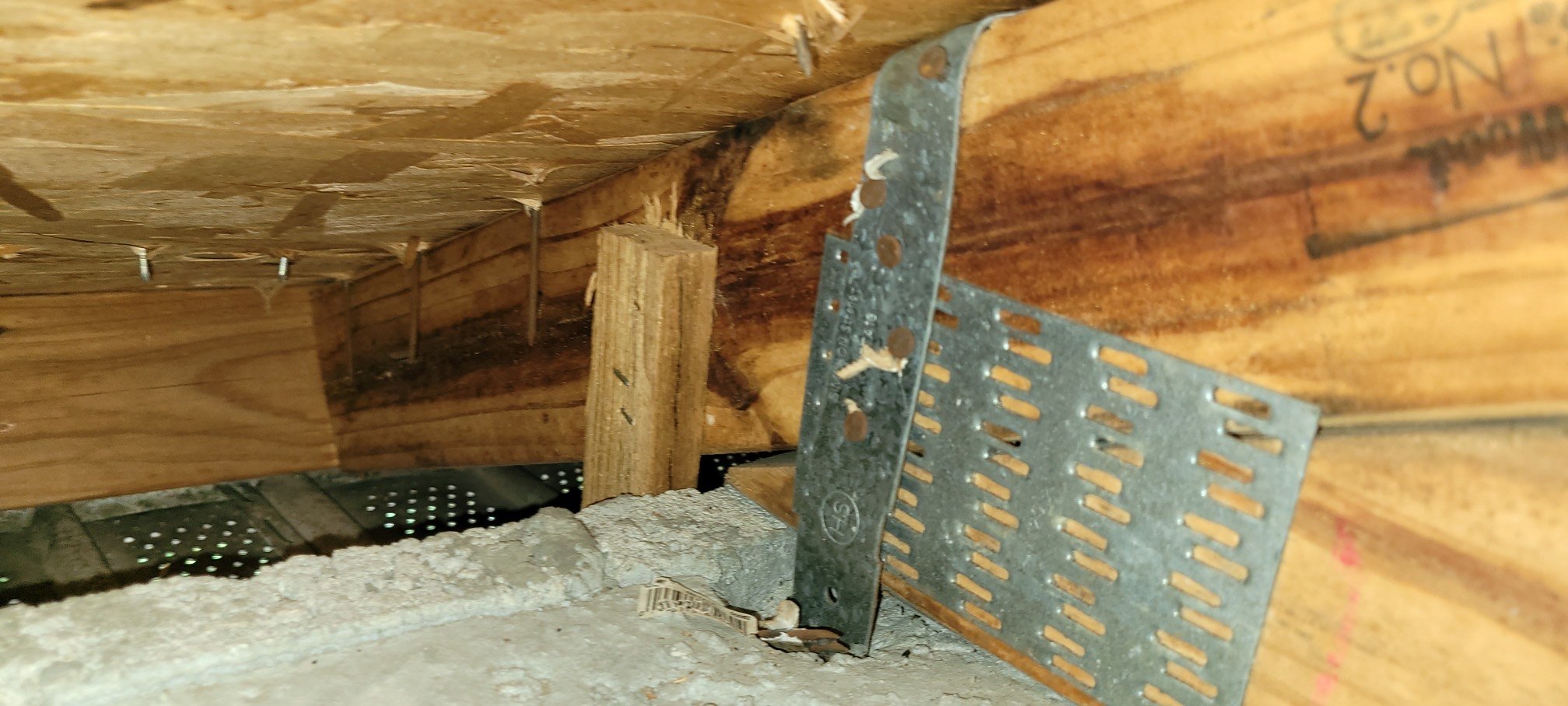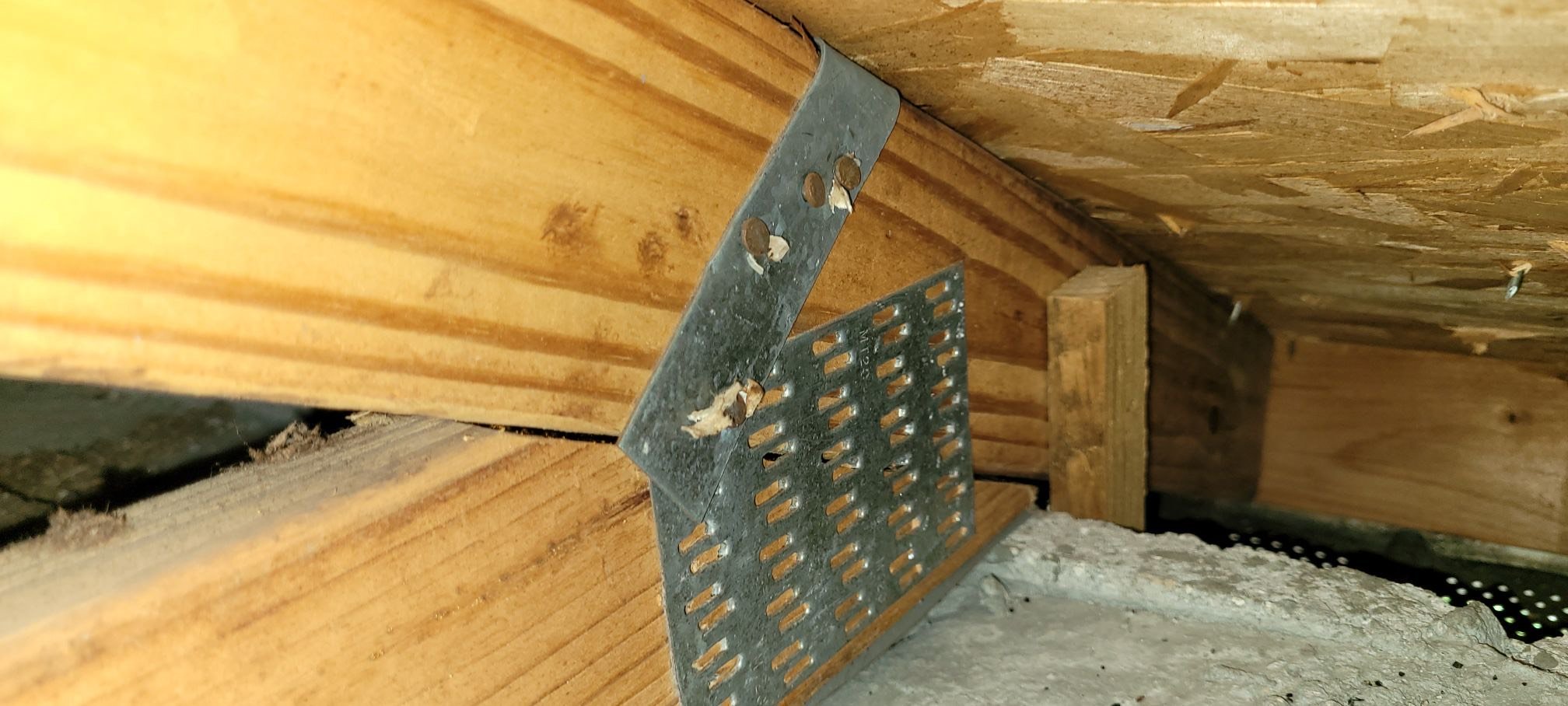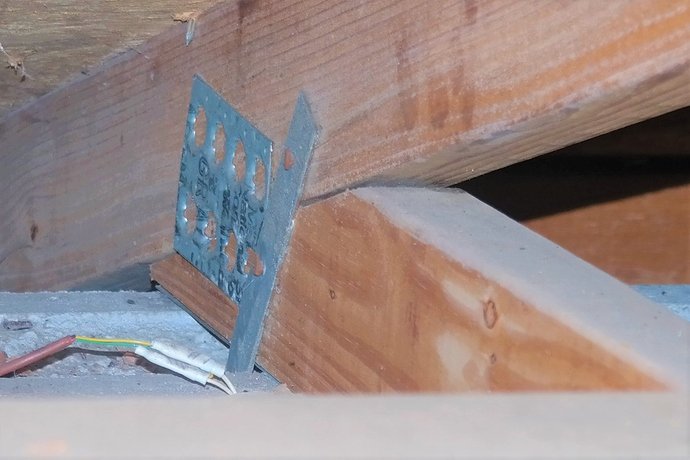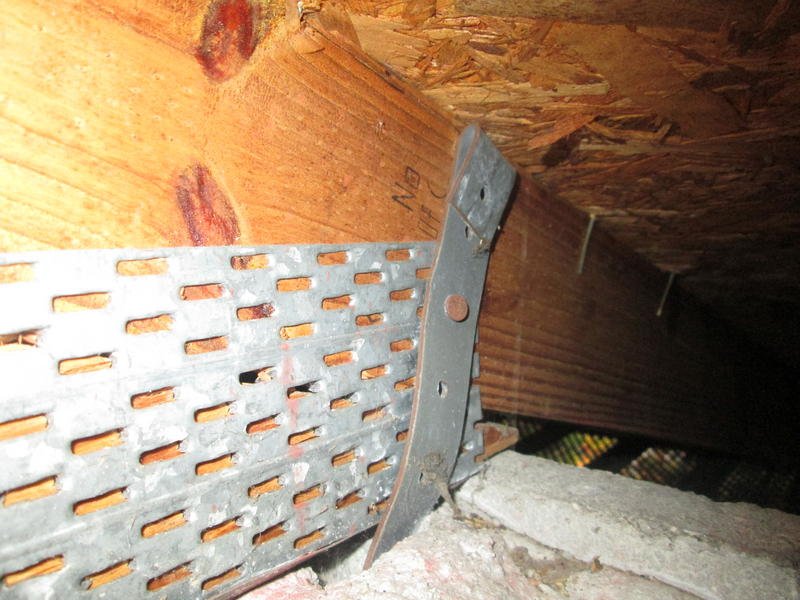Roof-to-wall Connectors: What are they and how they affect your Wind Mitigation Verification Form
/Wind mitigation reports are a crucial aspect of Florida's building code requirements, particularly for homeowners who wish to reduce their insurance premiums. The state of Florida is vulnerable to strong winds and hurricanes, which can cause significant damage to homes. Therefore, building codes have been put in place to ensure that homes are constructed to withstand these severe weather conditions. One of the critical aspects of wind mitigation is roof-to-wall connections, and there are various types of connectors used for this purpose, including clips, single wraps, double wraps, and toenails. In this blog post, we will explore the differences between these types of connectors.
Clips
Clips are metal connectors that are attached to the roof truss and the wall plate. They are designed to transfer the uplift forces from the roof to the walls during high winds. Clips are typically made of galvanized steel or stainless steel and are available in various sizes, depending on the roof pitch and the spacing of the trusses. The primary advantage of clips is that they are relatively easy to install and are cost-effective.
Single Wraps
Single wraps are metal straps that are wrapped around the truss and secured to the wall plate with nails or bolts. Single wraps are usually made of galvanized steel or stainless steel and are available in various sizes. They are designed to transfer the uplift forces from the roof to the walls during high winds. The primary advantage of single wraps is that they provide a more robust connection than clips, but they are more expensive and challenging to install.
Double Wraps
Double wraps are metal straps that are wrapped around the truss twice and secured to the wall plate with nails or bolts. Double wraps are typically made of galvanized steel or stainless steel and are available in various sizes. They are designed to transfer the uplift forces from the roof to the walls during high winds. The primary advantage of double wraps is that they provide the most robust connection and are typically required for homes in high wind zones.
In regards to the Uniform Mitigation Verification Inspection Form, to be considered clips, wraps or double wraps, the following minimum requirements must be met:
- Secured to truss/rafter with a minimum of three (3) nails, and
- Attached to the wall top plate of the wall framing, or embedded in the bond beam, with less than a ½" gap from the blocking or truss/rafter and blocked no more than 1.5” of the truss/rafter, and free of visible severe corrosion.
Toenails
Toenails are nails that are angled at a 45-degree angle and are driven through the roof truss into the wall plate. Toenails are the least effective type of roof-to-wall connector and are typically only used in older homes. They do not provide adequate resistance to uplift forces during high winds and are not recommended for use in new construction. In regards to the wind mitigation form, clips or straps that do not meet the minimum qualifying requirements, are considered “toe-nails.”
I recommend having a discussion with your insurance agent about the savings in premium costs you would receive after upgrading your toenails to clips or wraps. A qualified retrofit contractor is suggested to complete the upgrade to your roof to wall connectors.
In summary, roof-to-wall connectors are a critical aspect of wind mitigation for Florida homes. Clips are the most cost-effective option, while single wraps provide a more robust connection. Double wraps are the strongest option and are typically required in high wind zones. Toenails are the least effective option and are not recommended for use in new construction. It is essential to consult with a licensed contractor to determine the appropriate type of connector for your home based on the building code requirements and the wind zone in which you live. In addition, a licensed home inspector can provide you with a complete Uniform Mitigation Verification Inspection Form to submit to your insurance agent to help reduce your home insurance premium.










